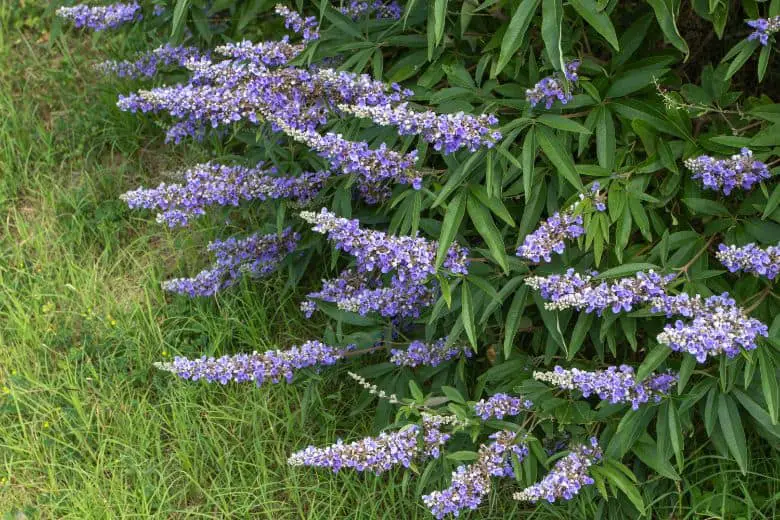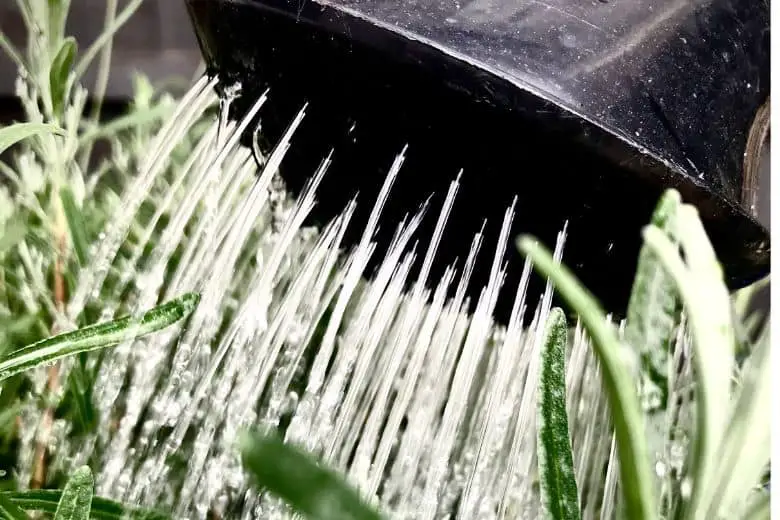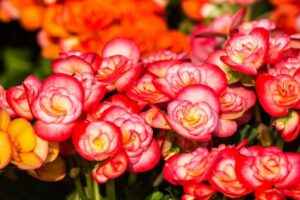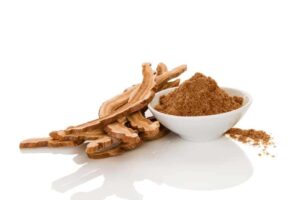
If you grow lavender in your garden, a common question many novice lavender growers have is, “How often should I water my lavender plants?”. Watering lavender properly is crucial for the health and productivity of these beautiful herbaceous shrubs.
While lavender is drought tolerant once established, it still needs regular watering to flourish and produce its gorgeous aromatic blooms.
This guide will provide you with clear recommendations on how often to water lavender based on different growing conditions and times of the year. Following these watering guidelines will ensure your lavender is consistently supplied with the right amounts of moisture so it will continue pumping out lovely purple flowers season after season.
Watering Frequency Changes with Seasons
The frequency with which you water lavender will depend on the season and weather conditions. As a general rule, lavender needs more water when it is actively growing during spring and summer and less water once the weather cools down in fall and winter.
- Spring: During the spring months, when lavender begins its main growth cycle, water every 7-10 days if there is less than 1 inch of rain per week. This encourages robust new growth.
- Summer: In the heat of summer, lavender may need water every 5-7 days if temperatures are very hot and no significant rain has fallen. Make sure the soil is allowed to dry out slightly between watering.
- Fall: Come fall, as the temperatures start to cool, water frequency can be reduced. Every 10-14 days is usually sufficient if rain is limited during this period.
- Winter: Lavender is very tolerant of cold and dormant through winter. Water only if there is an extended dry spell without rain or snow cover for over 3-4 weeks. Otherwise, winter rainfall/snow is adequate.
Note:
Keep in mind that frequency may need to be adjusted based on your location and soil type. Clay soils hold more moisture than sandy soils, for example, so sandy soils will require more frequent watering. Another factor is how lavender is planted—containerized plants dry out faster than in-ground.
Signs to Watch For
Pay attention to the overall health and appearance of your lavender to determine if it needs water. Some signs that lavender is thirsty include:
- Wilting: If the leaves and stems appear limp or droopy during the heat of the day, this is a clear sign it needs a drink.
- Dry/Browned Stems: Damaged or brown stems could indicate it has gone too long without water.
- Leaf Drop: Leaves may start dropping prematurely if the plant is parched.
- Soft/Pliable Stems: Stems should feel firm—if they are soft or bendable, more water is needed.
- Dull Foliage: Healthy lavender has a vibrant green color. Foliage that looks dull or faded may be thirsty.
Be sure not to overwater by keeping the soil constantly moist, as lavender likes very well-drained soil that dries out between watering. Also, resist watering the foliage, as wet leaves can cause rot issues. Water at soil level until it is thoroughly moistened to a depth of 6-8 inches.
Watering Tips for Different Conditions
Depending on your specific growing conditions, here are some additional tips for watering lavender:
- Containers: Check soil moisture daily, especially in heat and water, when the top 1-2 inches are dry. Water thoroughly until the excess runs out the bottom.
- Newly Planted: Water deeply 2-3 times weekly for the first month after transplanting until established. Then, follow a normal watering schedule.
- Hot, Sunny Spots: These areas cause more rapid drying. Check the soil every 3-5 days and water it if it is very light and dry an inch below the surface.
- Morning Watering: Watering in the morning allows time for foliage to dry before nightfall, preventing diseases. Avoid wetting leaves if possible.
- Mulch Use: Organic mulch around lavender retains moisture and reduces water needs. Pull mulch away from the crown to prevent rot issues.
- Drip Irrigation: For large plantings, a drip irrigation system on a timer is effective for deep, infrequent watering with minimal waste.
- Rainfall: During wet weather, lavender may not need supplemental watering. Check soil moisture if rain is lacking.
Proper Watering Improves Bloom Duration
When lavender is consistently watered according to its needs, it will reward you with bountiful blooms over a longer period of time. Adequate water, along with well-draining soil, full sun exposure, and occasional pruning, helps promote vigorous growth and abundant flowering. By monitoring your plant’s moisture level and adjusting the watering schedule as needed, you can keep your lavender looking and performing its best all season long.
With the right watering practices tailored to your specific growing conditions, lavender is truly a low-maintenance addition to any garden. Its drought tolerance means it is forgiving of occasional dry spells as well. Just be sure not to overwater, which can harm this Mediterranean herb more than underwater in most cases. Follow these guidelines, and your lavender patch will thrive year after year.
Proper Watering Techniques

When it’s time to water your lavender according to the intervals described above, it’s important to use appropriate watering techniques:
- Applying water in the early morning allows it to soak deeply into the soil without sitting on foliage, where it can cause rot or fungal issues due to excess moisture and warmth.
- Water slowly and thoroughly until the top 6-8 inches of soil is saturated. This encourages deep-root growth. Light and frequent sprinklings do no good.
- For large plantings, a drip irrigation system that soaks the soil unobtrusively is perfect for watering efficiently without wetting foliage.
- Laying a soaker hose at the base of the lavender and letting it run for 30-60 minutes is an easy way to soak the root zone without disturbing plants thoroughly.
- Use a wand attachment to direct water only at the soil surface around the base of each plant or grouping, avoiding its leaves and stems.
- Stop watering when you see moisture seeping out the drainage holes of planters or observe muddy soil that’s fully saturated an inch or two below the surface.
Adjusting for Different Types/Locations
Keep in mind that watering needs can vary for different lavender varieties and in different climates/locations:
1. English Lavender:
More moisture-loving English varieties like Lavandula angustifolia may need water slightly more often than others in hot, dry climates—weekly rather than every 10 days in peak summer for example.
2. Mediterranean/French Lavender:
Species from Mediterranean regions, like L. stoechas and L. dentata, have very low water needs. Space watering every 2-3 weeks or as needed in container gardens where soil dries faster.
3. Color Varieties:
Bred more for colorful blooms than drought tolerance, some novelty varieties may need slightly more frequent water than hardier lavender cultivars.
4. Cold Hardy Varieties:
More northern hardiness types can tolerate less water and longer drought periods than tender varieties. Adjust accordingly based on chill zone hardiness.
5. In Containers:
Potted lavender dries out faster than in-ground and may need water every 5-7 days in summer, depending on pot size and conditions. Monitor soil closely.
6. Coastal Gardens:
Near oceans where humidity is higher, lavender may only need water every 10-14 days compared to hot inland climates.
7. Greenhouse/Indoor:
As potting mixes indoors lack the ability to retain moisture, check pots every 3-5 days and water thoroughly when the surface feels dry an inch deep.
Conclusion
With some trial and error, you’ll learn the specific watering needs of your individual lavender plants based on variety, location, and season. Following these general watering guidelines will keep your lavender looking beautiful all growing season without leaving it thirsty or soggy. Be sure to reduce watering as fall arrives to prepare it for winter dormancy.





2 Comments